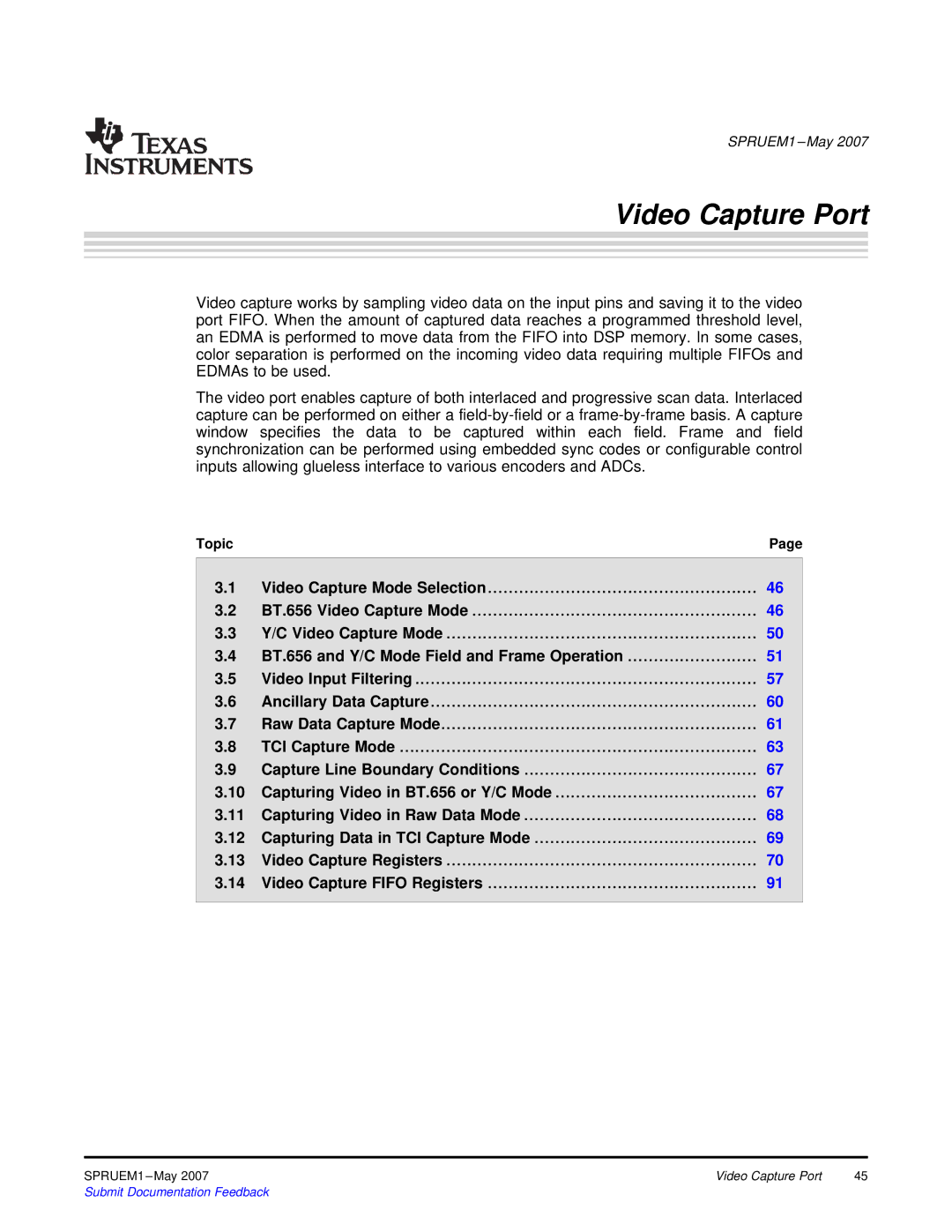
SPRUEM1 – May 2007
Video Capture Port
Video capture works by sampling video data on the input pins and saving it to the video port FIFO. When the amount of captured data reaches a programmed threshold level, an EDMA is performed to move data from the FIFO into DSP memory. In some cases, color separation is performed on the incoming video data requiring multiple FIFOs and EDMAs to be used.
The video port enables capture of both interlaced and progressive scan data. Interlaced capture can be performed on either a
Topic |
| Page |
3.1 | Video Capture Mode Selection | 46 |
3.2 | BT.656 Video Capture Mode | 46 |
3.3 | Y/C Video Capture Mode | 50 |
3.4 | BT.656 and Y/C Mode Field and Frame Operation | 51 |
3.5 | Video Input Filtering | 57 |
3.6 | Ancillary Data Capture | 60 |
3.7 | Raw Data Capture Mode | 61 |
3.8 | TCI Capture Mode | 63 |
3.9 | Capture Line Boundary Conditions | 67 |
3.10 | Capturing Video in BT.656 or Y/C Mode | 67 |
3.11 | Capturing Video in Raw Data Mode | 68 |
3.12 | Capturing Data in TCI Capture Mode | 69 |
3.13 | Video Capture Registers | 70 |
3.14 | Video Capture FIFO Registers | 91 |
SPRUEM1 | Video Capture Port | 45 |
